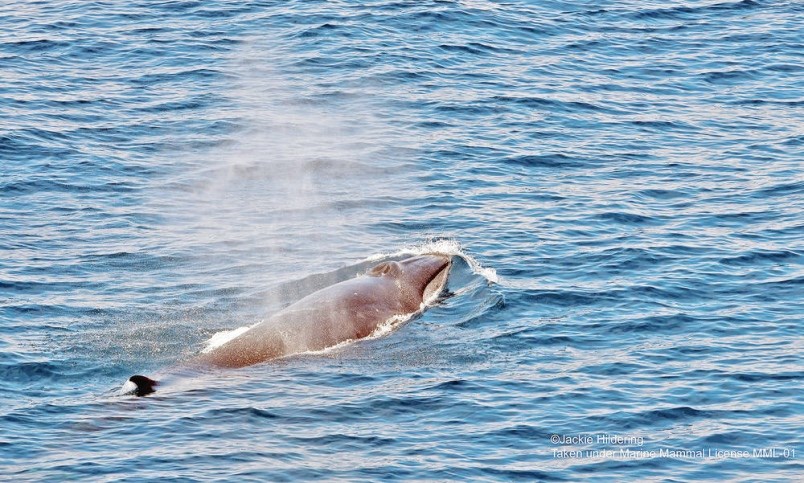The science team aboard the research vessel saw the big blows in the distance, 300 kilometres off central Vancouver Island.
When they got closer, they realized they had found a group of 25 to 30 endangered Sei whales, not seen in these numbers in Canadian waters for 50 or 60 years.
“Simply astounding and yes, I cried, just a quiet little bit,” humpback researcher Jackie Hildering wrote in a Facebook post.
“It’s the kind of sighting that fills whale researchers’ hearts to overflowing,” she wrote on the Marine Education and Research Society Facebook site.
“It was very exciting and unprecedented,” said Thomas Doniol-Valcroze, chief scientist of Fisheries and Oceans Canada’s cetacean research program, who was also aboard the Canadian Coast Guard ship John P. Tully Thursday when the rare sighting occurred. “We have never seen anything like this.”
Sei whales are on the list of species at risk in Canada. Although there are several thousand in other parts of the world and other areas of the North Pacific, they are considered endangered in Canada because thousands were hunted by С����Ƶ’s commercial whaling industry until 1967.
“Since then nobody had seen them,” said Doniol-Valcroze. “In the last 50 years or so, there’s only been a handful of sightings in Canadian waters. My own team had never seen any until three years ago.”
DFO scientists have a mandate to work toward the recovery of species at risk, including Sei whales. But it was a bit of a challenge, because they couldn’t find any and they hoped they would recognize them if they did, said Doniol-Valcroze.
Sei whales are in the same family as humpbacks, blue whales and fin whales, he said. Their distinctive dorsal fin looks like a big dolphin dorsal fin and they don’t show their fluke or tail when they dive.
Last week, the research team, which was conducting a whale survey, started seeing a few of these long, lean, brownish- coloured whales, which are 13 to 14 metres in length.
“And it was very exciting. And at some point, it got even more exciting because we found 25 to 30 Sei whales,” said Doniol-Valcroze.
The team deployed a small boat to get skin samples from two whales. These will be used for genetics to find out what population these Sei whales belong to and where they come from.
“We will be able to compare the samples with those taken by our colleagues in America and people elsewhere in the Pacific Ocean,” said Doniol-Valcroze.
The scientists will now try to find out if the population of Sei whales is recovering.
“It’s certainly what we’re hoping for. We don’t know if we’re seeing their numbers increase or there are simply more coming into Canadian waters. It’s going to take us years of research and hopefully more sightings,” he said. “In any case, it’s good news. There must be a population that has recovered enough that it’s now coming back to Canadian waters.”
The scientists will try to discover what the Sei whales are feeding on in our waters, to understand what attracted them here. Typically, Sei whales eat a lot of different things including small plankton or krill and small fish.
The team spent three hours with the whales, getting the data they needed, said Doniol-Valcroze. They continued to see the Sei whales that day and the next, throughout the entire offshore area they were surveying.
“What’s really important is the fact that they were hunted, the fact we haven’t seen them for so long and now we have the opportunity to learn more and document their recovery, their comeback to Canadian waters, if that’s what it is.”



